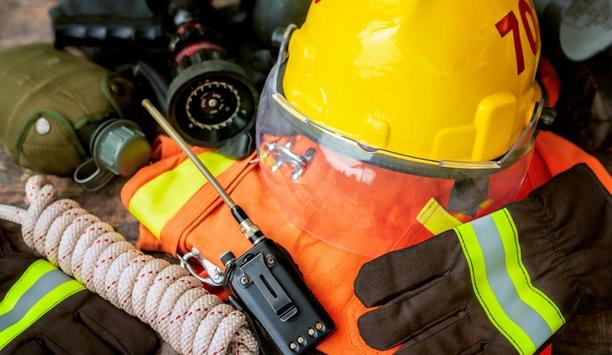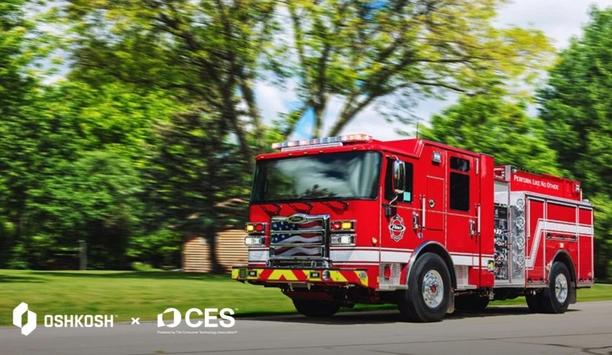Fire alarm call points play an integral role in fire alarm systems. Whether users are installing a completely new fire system or looking to maintain/upgrade an existing one, users are likely to come across the term “call points.”
In this article, APE delves into some common questions around fire alarm call points and everything businesses need to know. If users are looking for help with either commercial or residential fire alarm systems, simply get in touch with A.P.E Fire and Security for expert advice.
What is a Fire Alarm Call Point?
A fire alarm call point (sometimes referred to as a manual call point) provides an opportunity to manually raise the alarm in the event of a fire. By pushing the button (usually placed behind a breakable element such as glass), the alarm will sound and alert everyone in the building.
Fire alarm call points can be connected to the central fire alarm and local fire brigade departments. Pull stations serve the same purpose and are commonplace in North America as an alternative to a call point.
Another layer of safety
Call points help add another layer of safety to a fire alarm system by allowing humans to take control quickly and effectively. This can help resolve a potential fire before it triggers automated fire and smoke detectors.
Call points can also be used to alert people of other hazards or emergencies and quickly get everyone out of a building.
What does Call Points Look Like?
On the white square are a black circle and two arrows pointing towards the circle
In UK and Europe, call points are likely to be found in red boxes with a white square in the middle. On the white square are a black circle and two arrows pointing towards the circle.
This makes it noticeably clear what to press in the event of an emergency. They should be visible at all times so anyone (owners, visitors, or customers) can push the alarm if required.
What Height Should a Fire Alarm Call Point be?
Call points are usually located between 1.2m and 1.6m, making them easily accessible. Locating them too high could mean certain individuals can’t access them easily.
For wheelchair use, call points may be located towards the lower end of this scale.
Where to Position Call Points?
Call points should always be easily accessible. Even without knowledge of a building and its layout, someone should be able to raise the alarm quickly if needed.
A good approach to call point positioning is to ensure that anyone leaving a building passes at least one call point. This makes it easy to raise an alarm in the event of a fire or emergency. As a result, placing them near fire escapes, corridors, and other existing points will ensure they are easily accessed.
Design requirements
Call points should be found on each floor and within 45m of each other
Call points should be found on each floor and within 45m of each other. For disabled residents, this should be adapted to within 25m of each other. There may be unique recommendations or design requirements to also consider, depending on the specific characteristics of a building or its residents.
For example, a care home with residents that have limited mobility may require more call points to counterbalance the fact it may take longer for these residents to evacuate a building.
Call point installation
Or similarly, if the building is handling dangerous materials/substances, additional call points (and other fire prevention products) may be necessary. This is where a fire and security provider can help provide bespoke design recommendations based on user building and requirements.
Using expert knowledge and over 40 years of experience, A.P.E Fire and Security team can help ensure all fire and security systems are designed and installed to provide the most value for users and their projects.
How Often to Test Fire Alarm Call Points?
It is always best to check with an accredited supplier how often users should test their fire alarm call points
Users' fire and security providers can provide tailored recommendations on testing and monitoring the call points. There may be specific legislation or recommendations depending on the building itself such as factories, high-risk settings, handling dangerous materials, etc.
In these instances, it may be necessary to carry out inspections and tests even more frequently. As a result, it is always best to check with an accredited supplier how often users should test their fire alarm call points.
Weekly test
A weekly test is often recommended. Doing the test at the same time each week also means those working in the building are more aware of the test happening.
Training certain individuals to become familiar with how the fire alarm system works is also greatly beneficial for an organization or if the user would prefer, an external supplier can support the user with this.
Servicing and testing alarms
Running a fire alarm call point test is a simple task and simply involves activating the alarm to check it works
Running a fire alarm call point test is a simple task and simply involves activating the alarm to check it works, followed by resetting it to disable the alarm. It is always best practice to record all tests in a logbook, so users can refer back to it if required.
Servicing and testing alarms is paramount for maintaining safety standards and ensuring everything is functioning correctly. It can also help reduce false alarms, which can be annoying (and costly) for businesses. For help understanding how often a user fire alarm system should be serviced and what’s involved, simply get in contact with A.P.E Fire and Security.
Learn More with A.P.E Fire and Security
With more than 40 years of experience in the industry, APE's skilled and experienced staff can design, supply, install, maintain and monitor quality fire and security systems for a wide range of properties including; commercial and industrial, schools and academies, local authority, sports and social, retail, residential and various special projects.
BAFE accredited fire alarm design and installation, APE pride itself on its first-class service.















